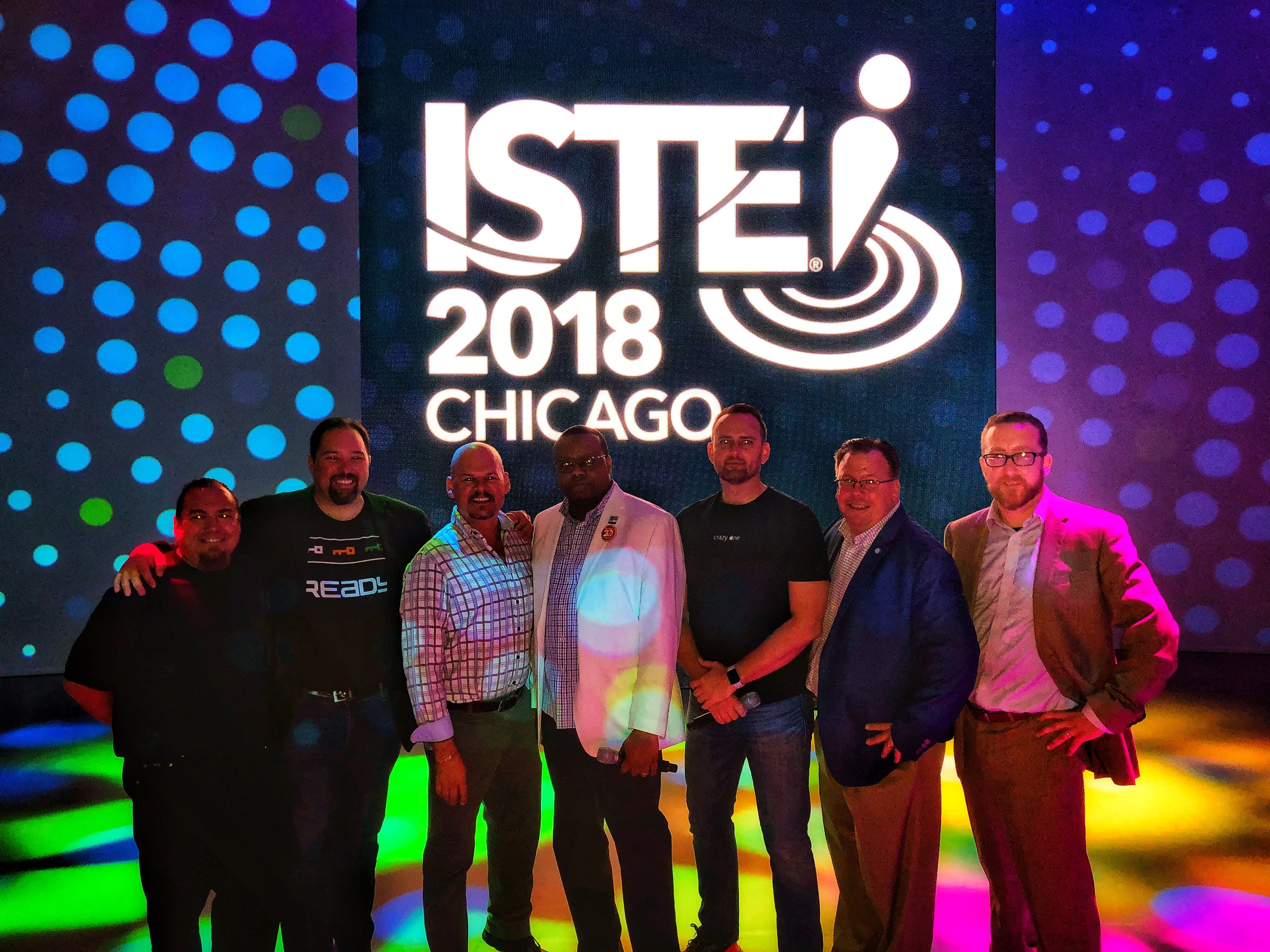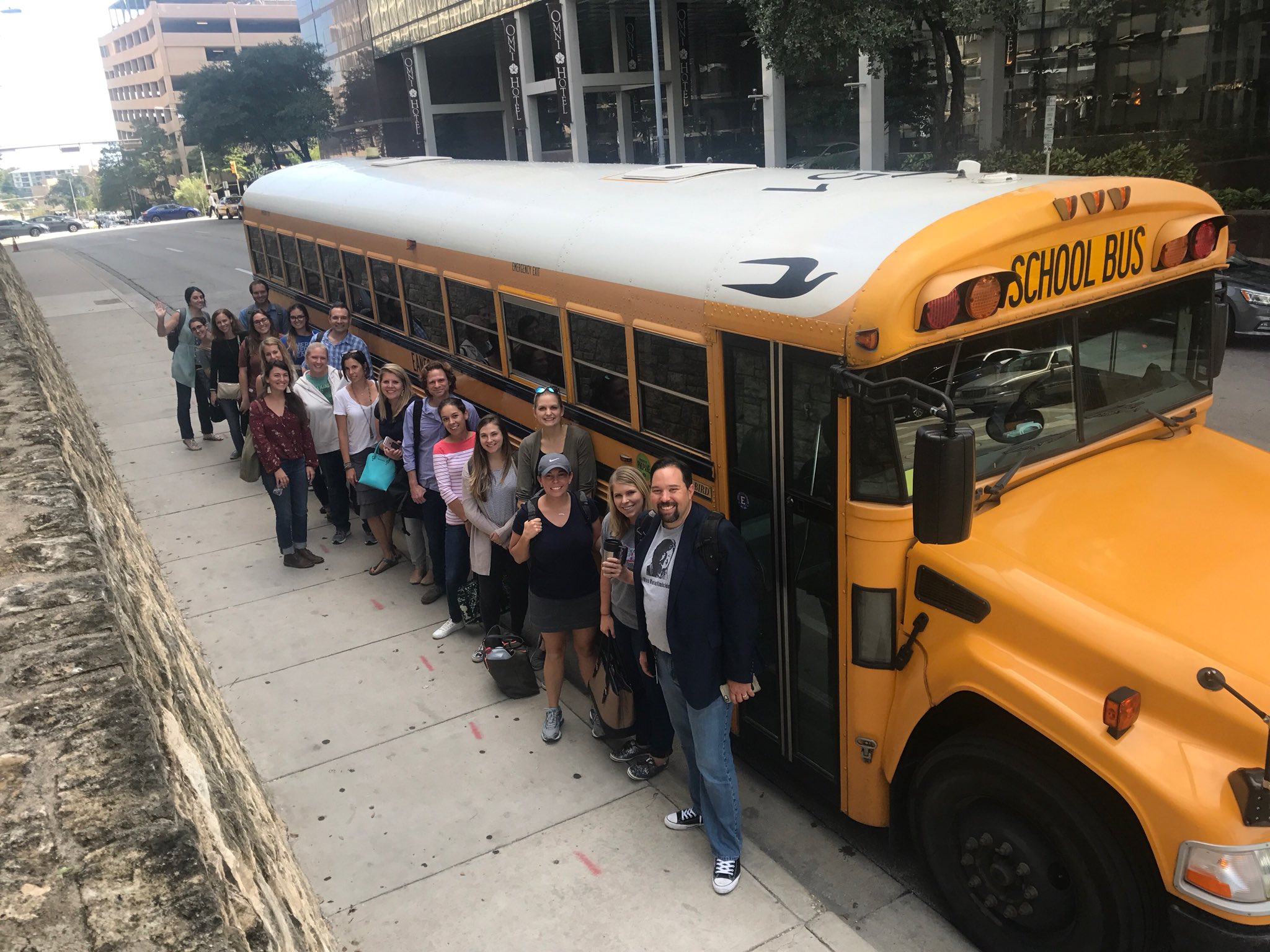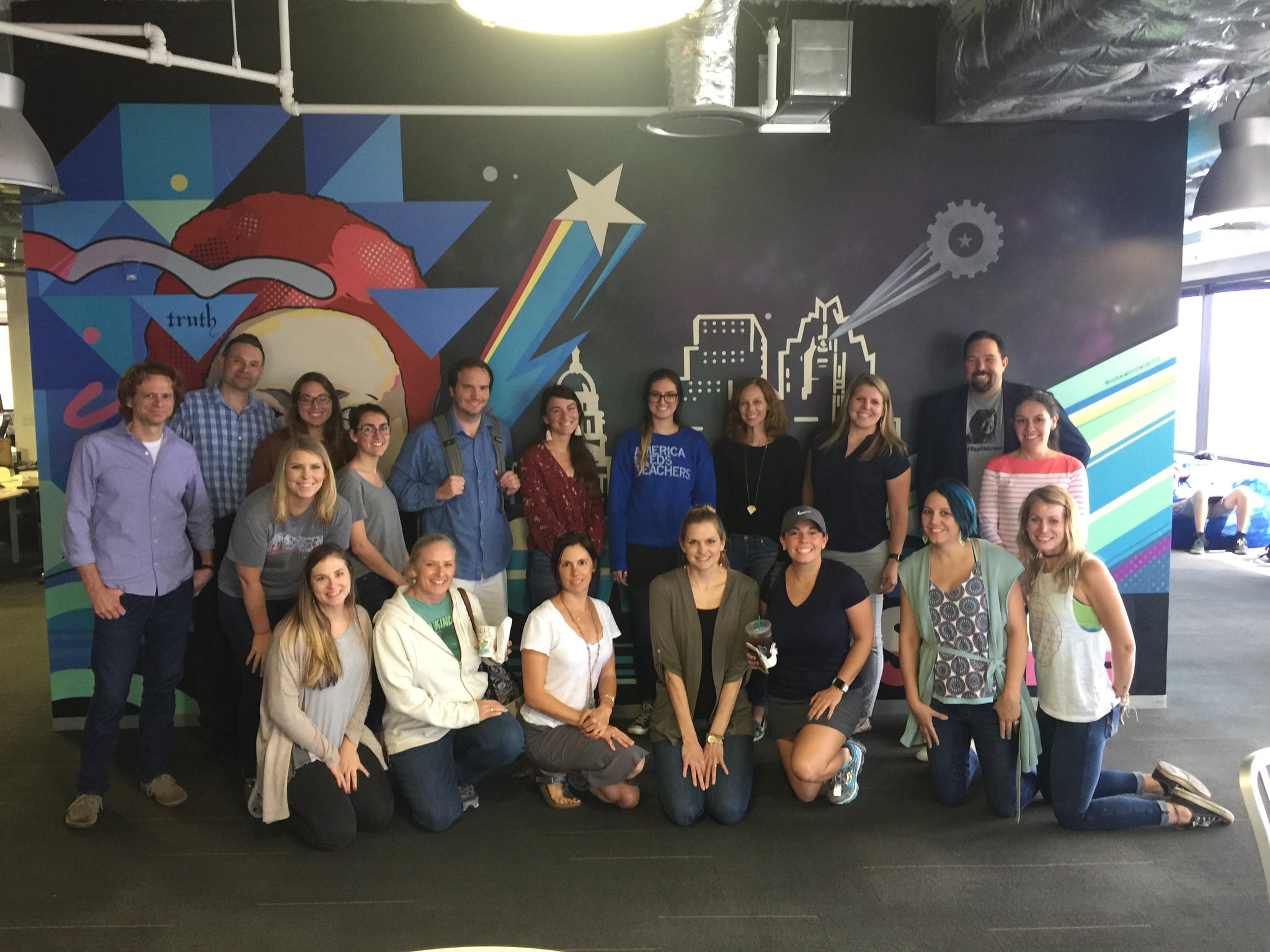What Is the Future of the Edtech Conference?
Just as education has changed thanks to the pandemic, so will edtech conferences

The edtech conference holds a special place in my heart for many reasons. It’s where I found my crew of like-minded educators who I still have connections with to this day. It’s where I found my footing as a professional speaker. It’s where I discovered amazing ideas and strategies that I could share with my staff. That said, in many ways, the edtech conference has become a mixed bag of experiences for most in attendance.
Now with the sudden shift to the virtual experience, what is to become of these monolithic and somewhat expensive events? Will schools pay hundreds of dollars to send teachers and secure subs or opt to just have them attend and learn remotely? Is there an advantage to learning in-person versus online? What about the connections and collaborative “conference hallway moments” when you run into someone and begin a creative dialog? What about all that conference swag in the vendor hall?
What will the future of edtech conferences bring?
As someone who has organized, presented, and attended edtech conferences all over the world, I consider myself somewhat of a conference junkie/expert. I see the good they can bring, and I see their faults. This is my own take on what that experience should be based on my own background knowledge and many interviews with other edtech thought leaders.
Virtual vs. In-person
Pre-pandemic, there was already a slow shift toward virtual conference experiences happening. Organizations such as ISTE posted videos of spotlight sessions on their website for later access for its members. Many other state-level conferences, such as ImpactEdu in Minnesota and NYSCATE in New York, offered online components and gamified experiences with social media. However, these were not the front-and-center, bread-and-butter part of the event. People want to see big name speakers and hear about schools transformational ideas while drinking overpriced coffee and planning their happy hour.
The virtual experience can offer inexpensive and more flexible solutions for educators wanting to learn from the comfort of their home or school. There are no needs for expensive flights, hotels, travel itineraries, or substitute teachers. For the budget-minded administrator out there, this looks to be a no-brainer solution for their teachers. Save money while still learning good stuff? Sign me up!
That said, there is a lot that is lost in the virtual experience that has not been successfully replicated during the pandemic, though many have tried. As a speaker, much like our teachers, you have to come up with creative ways to engage the audience in a virtual setting (although I’d argue this should be the case in any setting). Watching someone present on a 2D screen vs. the 3D experience is different. There is no atmosphere or energy in the room that the presenter and attendees can play off of, and while you can still learn quite a bit watching a webinar, the most memorable learning happens as a result of an experience. This is hard to do in a virtual setting.
Tools and ideas to transform education. Sign up below.

A Learning Vacation
Outside the sessions and playgrounds, I’d argue there is equally as much learning happening around the “in-between spaces” of the event. That chance encounter with a fellow Twitter follower in the hallway between sessions. Sitting down at a happy hour with educators from different parts of the world. Having dinner with a colleague who you haven’t seen in years. All of these experiences may seem like fluff to the outside observer, but it’s through these small conversations that true discovery and creativity can be born.
Teachers can make any moment educational. In 2018, at the ISTE conference, I hosted an “Ed Tech Poetry Slam” that brought together many phenomenal speakers from around the world and put them in an environment unlike any conference ballroom. Shifting people out of their comfort zones can be stressful, and this pandemic has taught us that having discomfort is a powerful thing. You can actually do a lot more in that moment of discomfort than you can sticking to what you already know. Having these moments of discomfort is a side effect of learning.
When I ran professional learning in my school district, one of my most successful workshops involved a secret field trip to an undisclosed location. Usually it was a place of business, a start-up company, or some open space where we could work, learn, and collaborate. Getting teachers out of their traditional environment awakens the brain to ideas and lessens the load of responsibilities that exist when you are either at home or at school. The impact of the environment on learning has been well-documented. I would add that a change of location away from your home town can also have a psychological impact and encourage a willingness to be open to new ideas. You don’t get these with a virtual experience, but does the expense justify the learning outcomes? Maybe.
Conversations vs. Content
Trying to manufacture an online environment that lends itself to collaboration can be challenging. Companies such as Remo and RoomKey quickly spun up artificial roundtable-type environments in which you can float between spaces and maybe stumble into a conversation. These attempts to “humanize the event experience” are admirable, but still sorely lacking in many ways.
When I attend a conference, I’m there for two main reasons: Content and conversations. The content comes from the sessions I attend, the vendor presentations, and the playground areas for hands-on activities. The conversations happen everywhere and at any time. You could discover that the person sitting next to you in a session is actually wrestling with the same issues you are (makes sense if you are interested in the same session). A chance encounter with an educator at a vendor-hosted after hours event could lead to a significant collaboration that will create lasting change to your staff and students.
I know this because I’ve seen it happen and experienced it myself. While I love to learn about the Top 10 VR tools in my classroom or how Bitmojis are revolutionizing primary student learning, I crave those conversations. They not only fill my educator bucket, they turn ideas into action. Those conversations don’t happen in the same manner in an online environment.
Death of the Vendor Hall?
When I was starting out as a teacher, the vendor hall was a magical place. Filled with laughter, noises, cheers, and enough free candy to feed a small country, it’s like Willy Wonka’s for edtech enthusiasts. All sorts of hopes and dreams can happen inside the vendor hall, but it’s also fraught with peril. How can I afford this amazing device cart with the LED lights and Bose sound system? Or will my kids truly enjoy and learn from this gamified learning platform du jour?
When the in-person conference went into hibernation with the pandemic, many edtech companies started to re-evaluate their marketing budget and funds dedicated to these massive vendor halls. The truth is many of these companies were already revisiting whether their funds couldn’t be better spent elsewhere rather than being in a sea of 300 tables and pop-up signage. In either virtual or in-person environments, vendors are wrestling with the attention economy. There are only so many things they can do to draw eyes to their product and, eventually, even the free candy goes stale.
You can start to understand why some vendors have been pulling out of vendor halls in favor of special side events around the conference location. These side events can bring a captive audience around a fun and engaging experience (often with free food and beverages). Conversions come at a much higher rate in these intimate events than during the massive hall mania that turns vendors into carnival barkers.
However, without a vendor hall, the edtech conference cannot exist with the current models available. Edtech companies help defray many of the expenses and overhead costs such as renting the facility and buying blocks of hotel rooms. Without their support, the traditional in-person conference will go the way of the Dodo bird.

The Future
Taking into account all of these factors and experiences, it’s hard to imagine a future in which the edtech conference goes “back to normal.” Much like our classrooms, conference presenters need to look at how to make the greatest impact and reach through creative means that might look different than what they are used to. Spaces for attendees to collaborate and conversate are still necessary, although these may have to be manufactured in a virtual environment at times or carved out of the large conference center hallways.
The edtech conference will need to become much more user-focused in order to survive. Organizers must offer diverse ways to deliver content and foster conversations beyond the traditional “Sit-n-get” sessions of old. Having engaging and gamified experiences for users to interact and create will keep attendees involved and craving more. Designing interactive ways for vendors to be seen and heard will keep companies coming back for more as well.
Drawing attendees back to in-person conferences will require some change and vision from those who organize such events. With that change will come discomfort and fear of the unknown. But after this past year, I can’t think of a better time to enact that change than right here, right now. It’s time to pivot.
Carl Hooker has been a part of a strong educational shift with technology integration since becoming an educator. As Director of Innovation & Digital Learning at Eanes ISD, he has helped spearhead the LEAP program, which put one-to-one iPads in the hands of all K-12 students in his 8,000-student district. He is also the founder of “iPadpalooza”- a three-day “learning festival” held in Austin annually. He's also the author of the six-book series titled Mobile Learning Mindset, a guide for teachers, administrators, parents and others to support and embrace mobile learning in our schools. Read more at Hooked on Innovation.
Carl Hooker has spent the past 20+ years in education as a teacher and administrator focused on the thoughtful integration of technology and innovation. He consults for multiple districts across the country and is a frequent speaker at state and national events. In his free time he's an author, DJ, podcast host, Poetry Slammer, and Trivia Night MC. He's the co-founder of the social platform K12Leaders.com. Check out his latest book Ready Set FAIL! Now available for order here: https://mrhook.it/fail Read more of his blogs at Hooked on Innovation.
